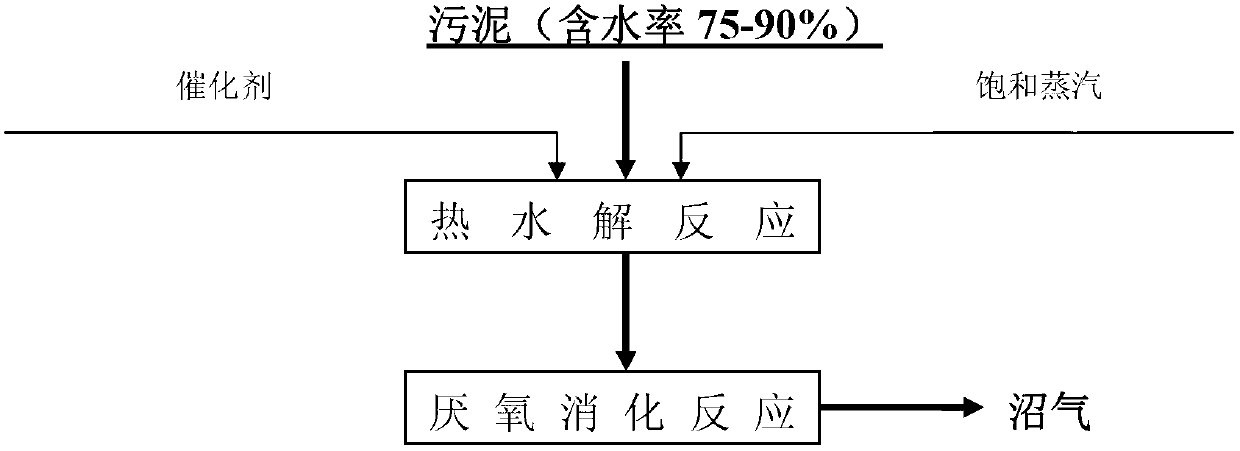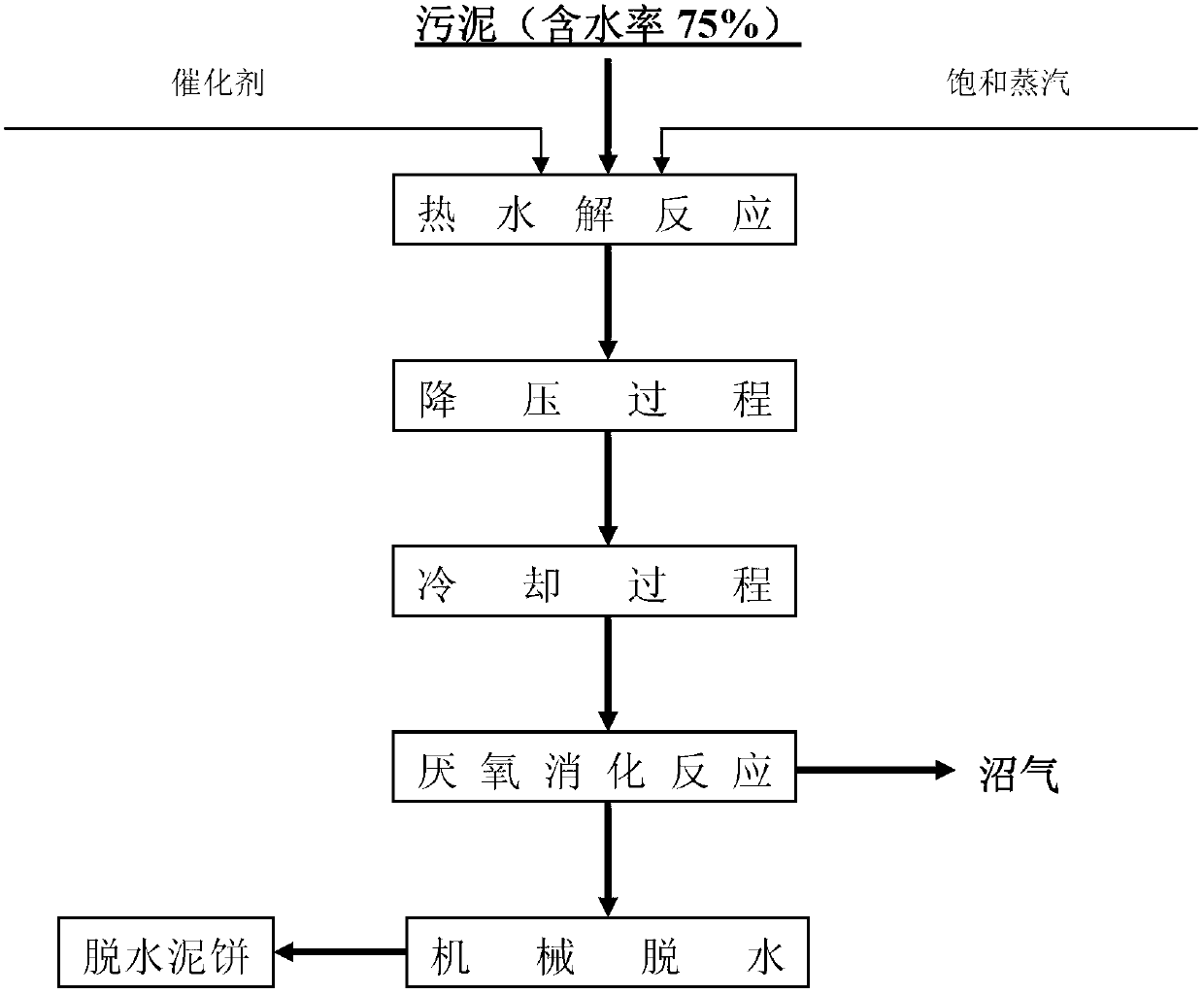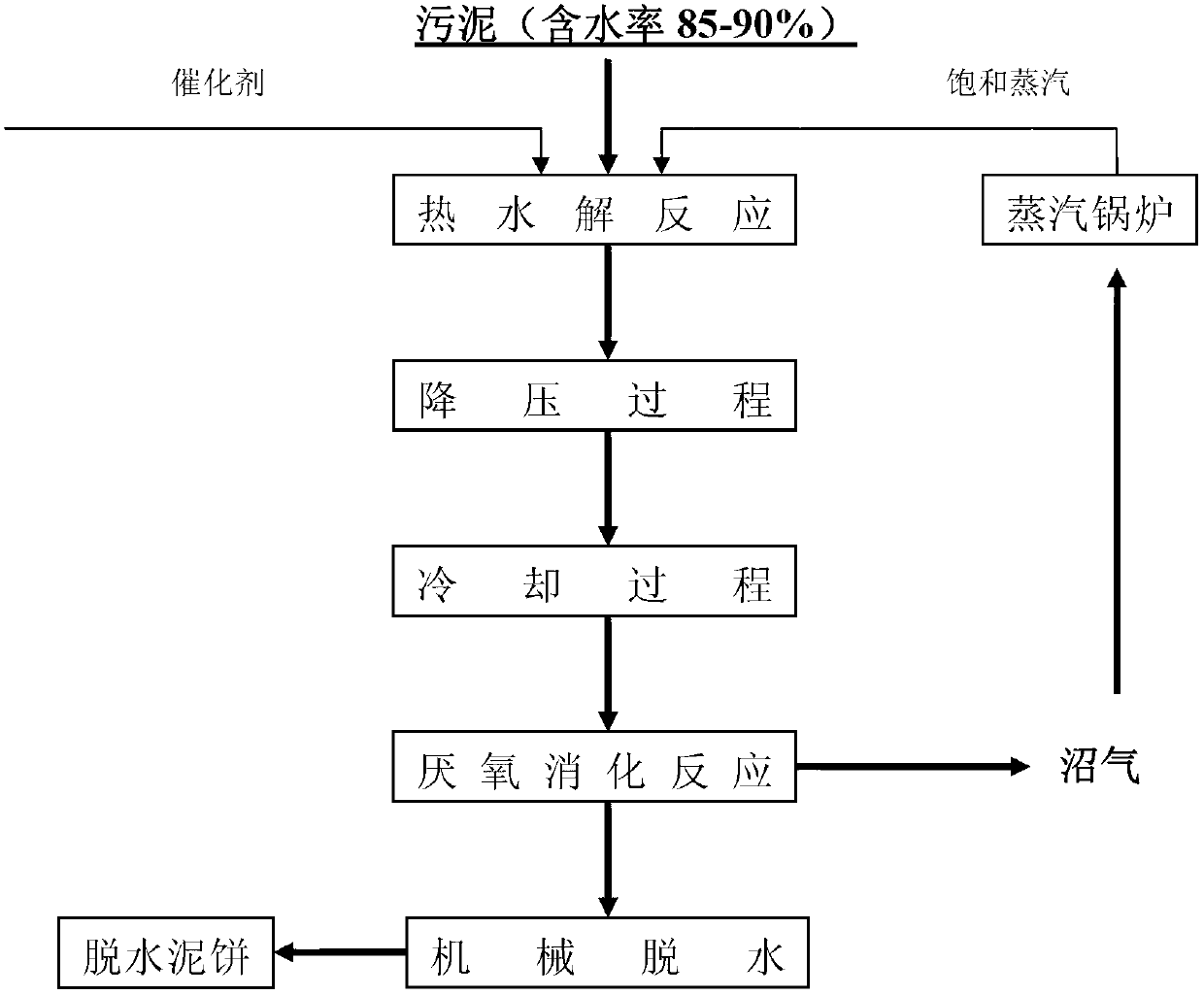Method for treatment and comprehensive utilization of sludge based on low-pressure catalytic thermal hydrolysis and application of method
A technology for catalytic thermal hydrolysis and sludge, applied in the direction of pyrolysis treatment of sludge, can solve the problems of low processing efficiency, high equipment cost, long time consumption, etc., and achieve the effects of improving dehydration performance, reducing cost and shortening time.
- Summary
- Abstract
- Description
- Claims
- Application Information
AI Technical Summary
Problems solved by technology
Method used
Image
Examples
Embodiment 1
[0035] Such as figure 2 As shown, 1 ton of sludge with a moisture content of 85-90% and 50kg of sodium carbonate is injected into the reactor, the feed port of the reactor is closed, and the stirring device in the reactor is started; from the steam boiler from the upper part of the reactor to it Inject saturated steam of 1.0-1.1MPa to heat the sludge mixed with sodium carbonate in the reactor; detect the real-time temperature of the sludge at the bottom of the reactor, and stop the injection of saturated steam when the sludge temperature reaches 170°C and keep it for 20- 25 minutes; then open the pressure relief valve to start steam and pressure relief. When the pressure in the reactor drops below 0.05MPa, open the discharge valve to discharge the mud obtained by thermal hydrolysis; the mud is cooled and undergoes anaerobic digestion to produce biogas The biogas residue produced after the biogas is produced enters the filter press, and after mechanical dehydration, a dehydrated...
Embodiment 2
[0037] Such as image 3 As shown, 1 ton of sludge with a moisture content of 80-85% and 15kg of sodium hydroxide are injected into the reactor, the feed port of the reactor is closed, and the stirring device in the reactor is started; stirring at a constant speed for 1 minute makes the sodium hydroxide and The sludge is evenly mixed; 1.1-1.2MPa saturated steam is injected into the steam boiler from the upper and lower parts of the reactor at the same time to heat the sludge mixed with sodium hydroxide in the reactor; the real-time detection of the sludge in the middle of the reactor Temperature. When the sludge temperature reaches 180°C, stop injecting saturated steam and keep it for 20-25 minutes; then open the pressure relief valve to start steam and pressure relief. When the pressure in the reactor drops below 0.05MPa, open the discharge valve. The mud obtained by thermal hydrolysis is discharged; after the mud is cooled, biogas is generated by anaerobic digestion reaction, ...
Embodiment 3
[0039] Inject 1 ton of sludge with a moisture content of 75-80% and 100 kg of potassium hydroxide into the reactor, close the reactor inlet, and start the stirring device in the reactor; stir at a constant speed for 3 minutes to mix potassium hydroxide with the sludge Uniformity; Inject 1.2-1.3MPa saturated steam from the upper part of the reactor into the steam boiler to heat the sludge mixed with potassium hydroxide in the reactor; detect the real-time temperature of the sludge in the lower part of the reactor, when the sludge temperature When it reaches 140°C, stop injecting saturated steam and keep it for 15-20 minutes; then open the pressure relief valve to start steam and pressure relief. When the pressure in the reactor drops below 0.05MPa, open the discharge valve to discharge the thermal hydrolysis treatment. After the mud is cooled, biogas is produced by anaerobic digestion reaction; the biogas residue produced during biogas production enters the filter press and is me...
PUM
 Login to View More
Login to View More Abstract
Description
Claims
Application Information
 Login to View More
Login to View More - R&D
- Intellectual Property
- Life Sciences
- Materials
- Tech Scout
- Unparalleled Data Quality
- Higher Quality Content
- 60% Fewer Hallucinations
Browse by: Latest US Patents, China's latest patents, Technical Efficacy Thesaurus, Application Domain, Technology Topic, Popular Technical Reports.
© 2025 PatSnap. All rights reserved.Legal|Privacy policy|Modern Slavery Act Transparency Statement|Sitemap|About US| Contact US: help@patsnap.com



